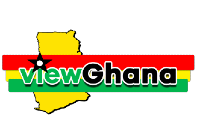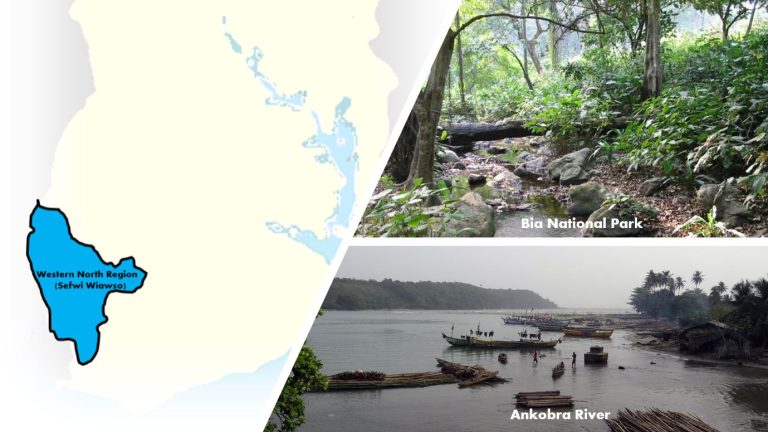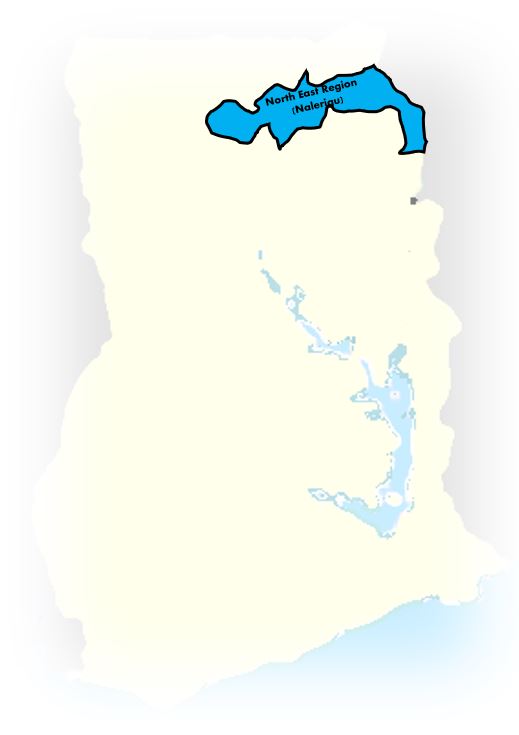Loading...
No Records Found
Sorry, no records were found. Please adjust your search criteria and try again.
Maps failed to load
Sorry, unable to load the Maps API.
Favourite
Accra is the gateway to Ghana and probably the most vibrant region in Ghana. The Greater Accra Region is the most densely populated administrative capital as it contains the two great metropolitan areas of Accra and Tema. Both make up Ghana’s major industrial and commercial centres, Accra is for business whilst Tema and its shipping ports provide vital access to Read more…
Favourite
The Volta Region is probably the most easterly region of Ghana, bordering on Togo, the Volta Region is an area of extraordinary scenic beauty with its rolling hills and valleys, rocky outcrops overlooking Volta Lake. Mt. Afadjato The region stretches from the coastal plains on the Atlantic coast right up to the arid lands of the north, and climatic conditions can vary tremendously. Read more…
Favourite
The Western North Region is one of the six new regions of Ghana which was created in 2019. To create the region the Western Region was split into two to create Western and Western North. So the region shares much of the same cultural and tourist attractions that could be found in the whole of the Western Region of Ghana. As a new Read more…
Favourite
The Western Region in Ghana is located in the south-western part of the country and shares boundaries with the Central, Ashanti, and Western North Region. To the West it shares a border with the republic of Cote D’Ivoire. The region has 192 Km of tropical beaches on the Atlantic Ocean and a tropical climate characterized by moderate temperatures all year round. Read more…
Favourite
The Central Region in Ghana was historically part of the Western Region until 1970 when it was carved out just before the 1970 Population Census. It occupies an area of 9,826 square kilometres or 4.1 per cent of Ghana’s land area, making it the third smallest in area after Greater Accra and Upper East. It shares common boundaries with Western Read more…
Favourite
The Ashanti Region is the cultural heartbeat to Ghana and Land of the Golden Stool. It’s where you will find the second capital Kumasi founded in 1695 by the Asantehene (Osei Tutu). The capital Kumasi is hilly and surrounded by a vast tropical rainforest belt ideal for exploring . This forest dominated by impressive buttress rooted forest giants, alongside large Read more…
Favourite
The Upper East Region of Ghana has a population of just over a million people and covers 7.8% of Ghana’s land mass. The capital of the region is Bolgatanga which is sometimes referred to as Bolga. Baobab trees The region has been the gateway into Ghana from Burkina Faso for centuries and is considered as an important traditional crossroads for Read more…
Favourite
Where is the Savannah region in Ghana? The Savannah Region is bordered on the north by the Upper West region, on the west by the Ghana-Côte d’Ivoire international border, on the south by the Bono and Bono East regions, and on the west by the North East and Northern regions. Savannah region is made up of 7 districts. The capital of the region is Damongo. When was the Savannah region created Read more…
Favourite
The North East Region is one of the sixteen regions of Ghana. It is located in the north of the Ghana and was created in December 2018 after a referendum was voted upon to break it off of the Northern region.[1] The region’s capital is Nalerigu. The North East Regin was created by splitting the Northern Region into two to create North East and Savannah For more Read more…
Favourite
The Bono region is one of the 16 administrative regions of Ghana. It is as a result of the remainder of Brong-Ahafo region when Bono East region and Ahafo region were created.[3] Sunyani, also known as the green city of Ghana is the regional capital. Sunyani can pride itself as the cleanest capital city and a major conference destination.[4] Read more…
Favourite
The Ahafo Region is a newly created Region in Ghana with Goaso as its capital. The Ahafo Region is bordered on the north by the Bono region, the east by Ashanti Region, the west by the Bono region, the south by the Western North Region and is made up of 6 districts. For more information on the area check out the wiki page The Ahafo Region was created by splitting the Brong-Ahafo Read more…
Favourite
The Bono East region of Ghana is a new region carved out of the existing Brong Ahafo region. The capital of the new region is Techiman. The Bono East Region borders on the north the Savannah Region, on the west the Bono Region, on the south the Ashanti region and on the east the Volta Lake. For more information on the area check out the wiki page Read more…
Favourite
The Upper West Region of Ghana has a different feeling, as a more traditional region. The capital of the region is Wa which is also the seat of the Wa Naa, Paramount Chief of the Walas. The magnificent palace still stands as stately as it did when it was first built in the 19th century. Where the Upper West Region Read more…
Favourite
The Northern Region is the largest region in Ghana in terms of land area. It shares boundaries with the Upper East and the Upper West Regions to the north, the Brong Ahafo and the Volta Regions to the south, and two neighbouring countries, the Republic of Togo to the east, and La Cote d’ Ivoire to the west. The land Read more…
Favourite
The Oti Region is one of the six regions created regions of Ghana in December 2018.[4] The region was carved out of the northern part of the Volta Region Dambai is the capital of the Oti Region. It is located on the eastern side of the Oti River a tributary of the Volta Lake For more information on the area check out the wiki page Read more…
Favourite
The Eastern Region of Ghana is a rich blend of dramatic landscapes, historic relics and traditional cultures. The ancient blends with the 20th century in this region so close to but such a contrast with Accra. The region is dominated by Lake Volta, one of the world’s largest man-made lakes, and the Akosombo Dam, source of much of Ghana’s hydroelectric Read more…
















